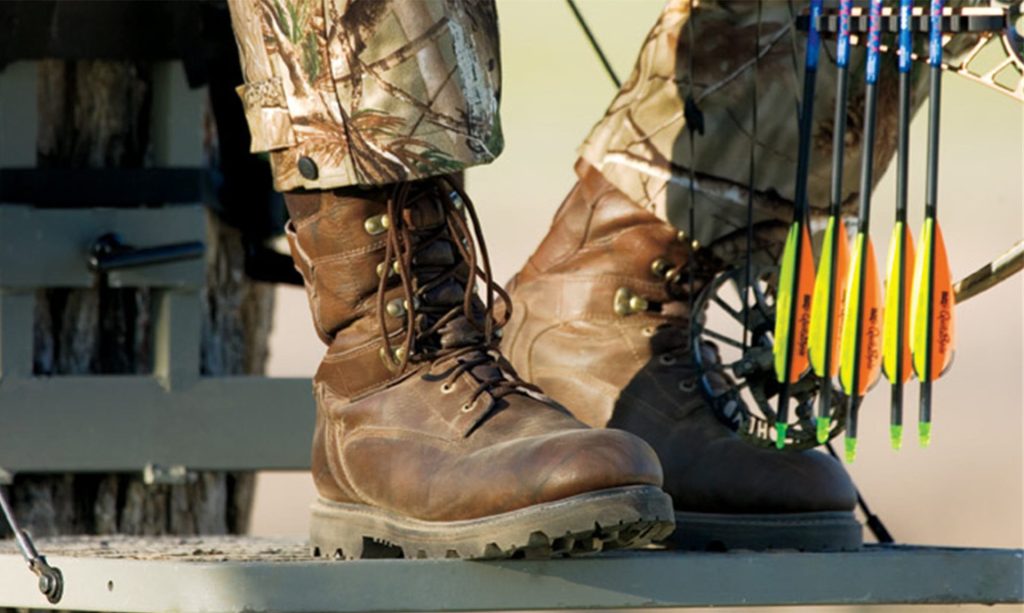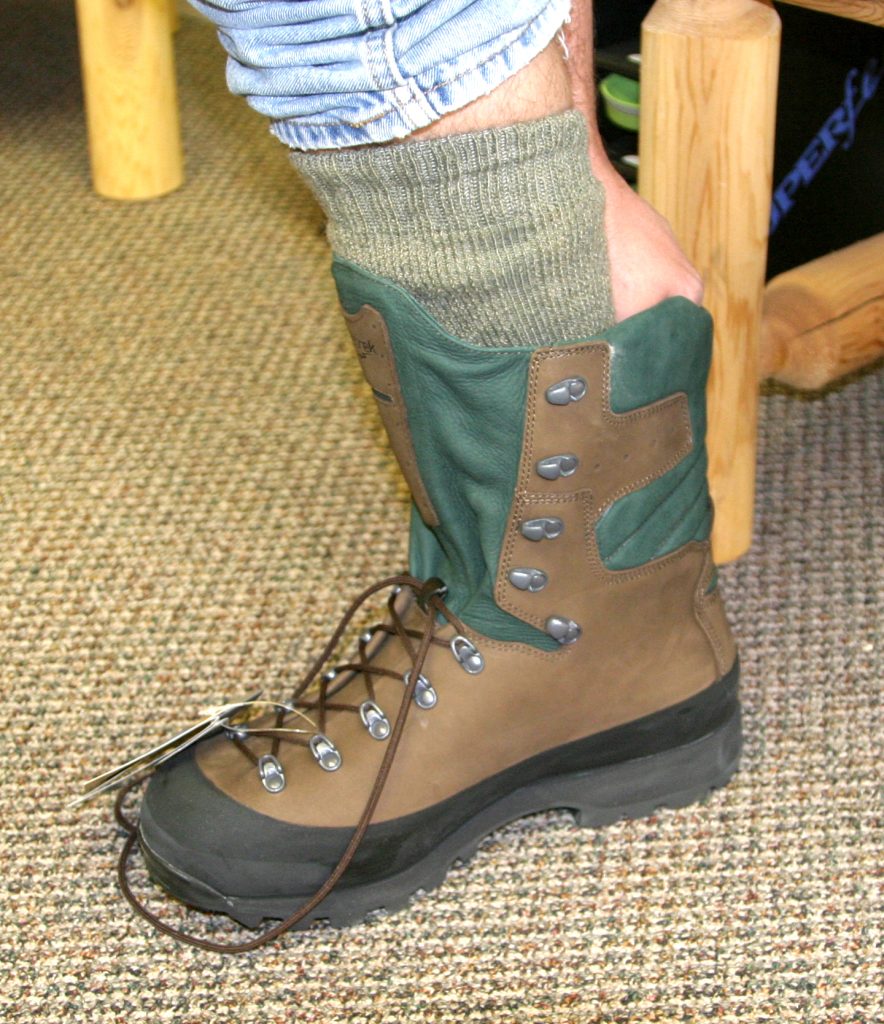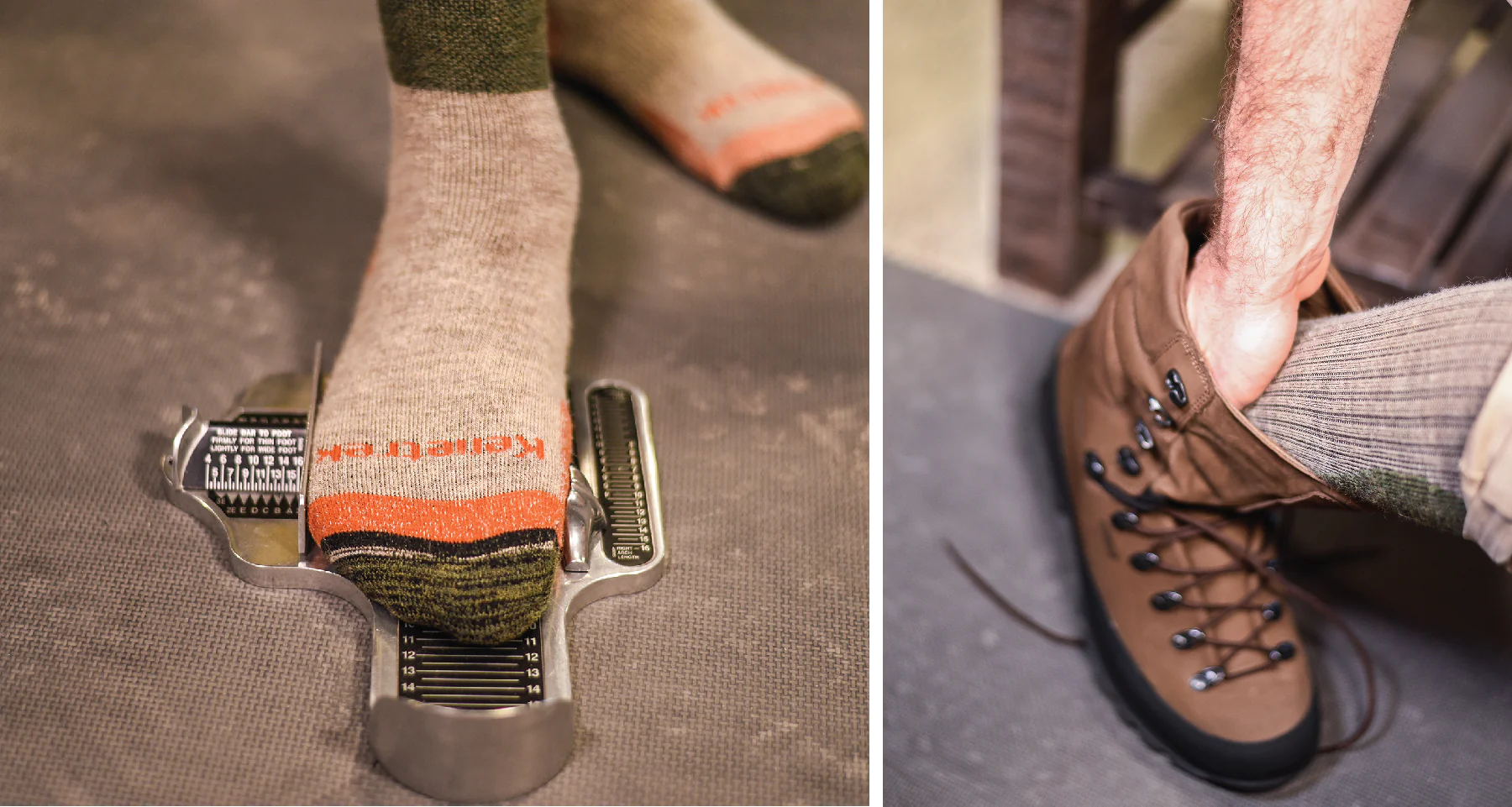Going on a hunting adventure requires more than just skill and patience; it demands the right gear, and at the forefront of that arsenal are your hunting boots.
The question lingering in the minds of many outdoor enthusiasts is, “How should hunting boots fit?” The answer to this seemingly straightforward query holds the key to a successful and comfortable hunting experience.
Beyond the thrill of the chase, the fit of your hunting boots can significantly impact your endurance, agility, and overall performance in the great outdoors.
In this guide, we delve into the essential considerations for finding the perfect fit, ensuring that your feet are not only well-protected but also ready to tackle the challenges of the hunt with ease.
3 Hunting Boots Fit Tips
Boot selection Process
Hunting in mountainous terrain underscores the significance of well-fitted and supportive boots. Experienced mountain hunting guides often share tales of hunters with severely damaged feet, putting an abrupt end to or significantly hindering what should have been a once-in-a-lifetime expedition.
Unless you’ve personally endured the pain and agony, it’s challenging to grasp the critical role your feet play in a mountain hunt. If your feet fail you, even the most expensive hunting gear becomes useless as you find yourself confined to camp, nursing your feet instead of pursuing success.
Over the past two decades, we’ve assisted countless hunters with their footwear requirements, gaining insights into selection and fitting that can aid you in discovering the perfect boot for your next adventure.
The emphasis on “aid” is crucial because taking personal responsibility for your boot fit is paramount. Each person’s feet are unique, and no single brand or style caters to everyone.
The initial step involves choosing the right style of boot based on your hunting requirements. Consider various factors:
Terrain: Sheep hunting in Alaska’s Chugach Mountains may demand a different boot than an elk hunt in Wyoming.
Temperature Range: A rut hunt for Alberta Bighorn in November requires different insulation compared to a desert sheep hunt in Baja Mexico.
Durability: Assess the necessary toughness for your hunts. A boot ideal for a sheep guide enduring six consecutive hunts after a month of scouting might not be the best choice for a hunter embarking on a single expedition.
Personal Stamina: Honestly evaluate your physical endurance and hunting intensity. Select a boot that aligns with your toughness, considering that what works for a guide may differ from what’s suitable for you.
Recognize that, after the first day, it’s usually evident who the hunter and who the guide is.
Other factors like boot height, weight, waterproofing, and breathability might also be considered, but focusing on these primary factors should initiate your selection process.
Find Proper Size
Once you’ve identified the appropriate boot style, the next crucial step is finding the best-fitting boot. Today’s market offers a plethora of excellent mountain boots, each uniquely constructed and built on different lasts, resulting in distinct fits for each style.
Trying on the boots is paramount. I suggest experimenting with several styles from various manufacturers to discover the optimal fit for your feet. Utilizing a Brannock measuring device to measure your feet is highly recommended.

The Brannock device gauges your overall foot length, arch length, and foot width. Armed with these measurements, it becomes crucial to ensure adequate toe length.
Sit in a chair, leave the boot unlaced, and gently slide your foot forward until any part of your toes lightly touches the end.
Avoid forcing them forward; a gentle touch suffices. Subsequently, confirm there’s at least a good finger’s width behind your heel.
Custom Fitting
After confirming the appropriate boot size, attention can be directed towards addressing the boot’s volume. Optimal mountain boot fit entails snugness without any pinch or pressure points. Adjusting boot volume is possible by varying the thickness of your sock or sock combination.
Many individuals prefer employing a wicking liner sock beneath a well-fitted boot sock. It’s crucial to choose a wool blend for its moisture-wicking properties and insulation even when damp.
Steer clear of cotton, as it retains moisture against the skin and takes too long to dry. Consider the new Kenetrek Hunting Socks – crafted from a blend of merino wool and durable synthetic fibers, available in various thicknesses.
While some may attempt thicker socks in colder weather for added warmth, this often leads to a too-tight fit, compressing boot insulation and reducing foot circulation, ultimately making your feet colder. I recommend discovering the optimal sock combination for your boots and consistently using the same sock system, regardless of the temperature.
Elevate the fit and performance of your boots with a quality footbed. Two notable options are the Kenetrek Supportive Insoles and Kenetrek Cushion Insoles. The Performance Insoles offer arch and heel cup support, while the Cushion Insoles suit individuals with low arches.
By investing effort in your boot selection and fitting process, you’ll craft a personal recipe for a mountain boot system that seamlessly blends support and comfort.
This customized boot system proves invaluable on demanding mountain hunts, and you might find it so comfortable that it becomes your go-to for all outdoor adventures.
Why to choose best fit hunting boot on hunting?
Selecting the best-fit hunting boots isn’t just about style or conforming to outdoor fashion; it’s a crucial decision that directly influences the success and enjoyment of your hunting expedition. The right pair of hunting boots can make a significant difference in your overall experience, and here’s why:

Comfort and Endurance:
A well-fitted hunting boot ensures maximum comfort, preventing blisters, hotspots, and foot fatigue. This comfort directly translates to increased endurance, allowing you to stay on your feet for longer periods without discomfort.
Improved Agility: ‘
Hunting often involves traversing uneven and challenging terrain. Boots that fit properly provide better ankle support and stability, enhancing your agility and reducing the risk of injuries. This is particularly crucial when navigating through dense woods, rocky landscapes, or muddy grounds.
Climate Adaptability:
The right fit contributes to effective insulation and ventilation, keeping your feet at an optimal temperature regardless of the weather. Whether you’re hunting in freezing temperatures or sweltering heat, the best-fit boots help regulate your foot’s temperature, preventing discomfort and potential health issues.
Quiet Movement:
Hunting demands stealth, and ill-fitted boots can produce unnecessary noise, alerting your prey to your presence. Properly fitting boots minimize the risk of creaks, squeaks, or excessive noise, allowing you to move quietly and maintain the element of surprise.
Prevention of Injuries:
Hunting involves various physical activities, including long walks, climbs, and potentially carrying heavy gear. A snug fit reduces the likelihood of accidents by providing stability and preventing slips or twisted ankles.
Enhanced Focus:
Uncomfortable or distracting footwear can divert your attention away from the task at hand. The right fit ensures your focus remains on the hunt rather than discomfort or pain, allowing you to stay alert and engaged in the experience.
FAQs
1. Why is the fit of hunting boots crucial for a successful hunting experience?
The fit of hunting boots directly impacts comfort, endurance, agility, and overall performance during a hunting expedition. Ill-fitted boots can lead to discomfort, blisters, and reduced focus, affecting the hunter’s success and enjoyment.
2. How do I choose the right style of hunting boot for my adventure?
Consider factors such as terrain, temperature range, durability, and personal stamina. Tailor your boot choice to the specific demands of your hunting environment, ensuring the boots meet the challenges you might face.
3. What is the importance of finding the proper size for hunting boots?
Finding the right size is essential for comfort and performance. Using a Brannock measuring device to measure your feet, ensuring adequate toe length, and leaving a finger’s width behind your heel are key steps in determining the proper size.
4. How can I address the boot’s volume to achieve an optimal fit?
Boot volume can be adjusted by varying the thickness of your sock or sock combination. Optimal fit involves snugness without pressure points. Using a moisture-wicking sock combination and quality footbeds can further enhance the overall fit and comfort.
5. Can thicker socks be used for added warmth in cold weather?
While thicker socks may provide added warmth, they can lead to a too-tight fit, compressing boot insulation and reducing foot circulation. It’s recommended to find the optimal sock combination for your boots and consistently use the same system, regardless of temperature.
6. How do quality hunting boots contribute to quiet movement during a hunt?
Well-fitted hunting boots minimize unnecessary noise, such as creaks or squeaks, ensuring quiet movement. This stealthiness is essential for maintaining the element of surprise while pursuing prey during a hunting expedition.
Conclusion
The journey through the shades of selecting and fitting hunting boots reveals a critical truth: the success of a hunting expedition rests, quite literally, on the foundation of well-chosen and properly fitted footwear. As hunters, we navigate diverse terrains, brave fluctuating climates, and rely on our physical endurance.
The importance of addressing the question, “How should hunting boots fit?” becomes paramount in ensuring not only comfort but also the preservation of our ability to perform at our best in the great outdoors.

